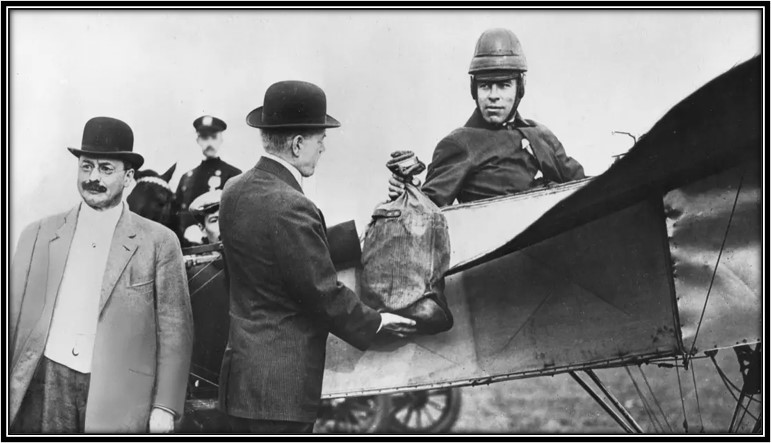Good morning fellow ECAHF’ers. While few of us send letters anymore, we may still hear complaints about the cost of first-class postage going up. In fact, some of you may be unaware that the price for a first-class stamp just over a week ago on July 14, 2024 went from 68 to 73 cents. “Five cents?!?,” you might hear, “That’s highway robbery!”
But when you think about, getting a one-ounce letter across our great country from North Carolina to California in three to four days (usually…there are, of course, exceptions) for 73 cents is really quite the bargain. Especially if that one-ounce letter is going by air.
And we take for granted the ability to get a letter to its intended recipient across the country or overseas in a week or so like it’s always been that way. But it hasn’t always been that way. And many pilots died trying to, as the mail deliverer’s motto says, “Neither snow nor rain nor heat nor gloom of night stays me from the swift completion of my appointed rounds.”
If fact, according to the National Postal Museum, “Thirty-five of the pilots hired by the Post Office Department between 1919-1926 were killed while flying the mail. Most of those pilots died in the early years of the service. In 1919, one pilot died for every 115,325 miles flown.”
Today, according to History.com (photos courtesy of Getty Images), “On July 26, 1775, the Second Continental Congress established the U.S. postal system, with Benjamin Franklin as its first postmaster general. Franklin (1706-1790) put in place the foundation for many aspects of today’s mail system.”
And while old Ben might have imagined air mail delivery beyond tiny notes delivered by homing pigeons, it took 136 years to even begin to deliver mail by airplane, let alone perfect it.




Also, according History.com, “The first authorized U.S. Mail flight took place in 1911 when aviator Earle Ovington piloted his Bleriot monoplane between Garden City and Mineola, New York. In 1918, scheduled Airmail service launched, using pilots and planes borrowed from the Army. Charles Lindbergh flew the mail between Chicago and St. Louis in 1926, a year before he made his historic nonstop flight across the Atlantic. In 1924, transcontinental airmail took one day, 10 hours and 20 minutes, compared to the six to seven hours it might take today.”

And finally, according the American Experience at https://www.pbs.org/wgbh/americanexperience/features/lindbergh-airmail-maverick/: “Airmail service was considered the most dangerous job in the country. Statistics bore that out: 31 of the first 40 pilots hired to fly mail were killed in crashes. In the spring of 1920, the first transcontinental airmail service was established between New York and San Francisco, with ‘feeder routes’ between Washington and New York, St. Louis and Chicago, and Chicago and Minneapolis. In the early years, the U.S. Post Office ran the service under control of the federal government. In 1925 a bill was passed that turned airmail service over to the private sector. In the spring of 1925, Charles Lindbergh was in St. Louis where he came to the attention of William B. and Frank Robinson, two World War I fliers who owned Robinson Aircraft Corporation. The Robinson brothers had been awarded the contract to fly mail between St. Louis and Chicago. They were greatly impressed with Lindbergh's skill as an aviator and his serious manner. They offered him the job as Chief Pilot of their new airmail service. Lindbergh loved a challenge, and flying airmail would present many.

“The planes used by airmail pilots, mainly De Havillands, were referred to as ‘flaming coffins,’ because their fuel tanks, which were set between the engine and the cockpit, would often explode on crash landings. And crash landings were not uncommon. The De Havillands were also known for reaching dangerously high landing speeds, being too heavy, having poorly designed cockpits, and ‘the gliding angle of a brick.’ Airmail pilots, lacking any communication with ground crews, also had to contend with poorly-lit and poorly-designed landing fields. Weather conditions could be confounding, sometimes changing drastically every 50 or so miles.”
So, let’s celebrate the postal service’s birthday today and the early airmail pilots who risked it all and send a letter to a lover, a relative, or a friend. Even at 73 cents, it’s a bargain! And who doesn’t relish receiving a real, heart-felt and newsy, handwritten letter in the mail? You may just make someone’s day!
Onward and upward!
Barry R. Fetzer
ECAHF Historian
